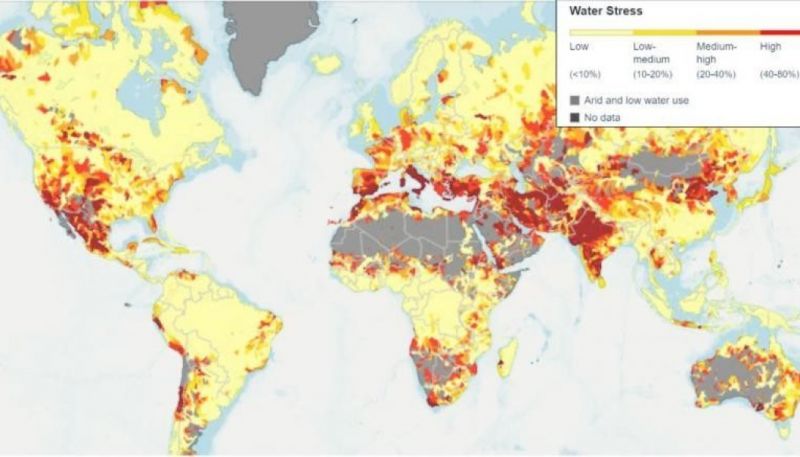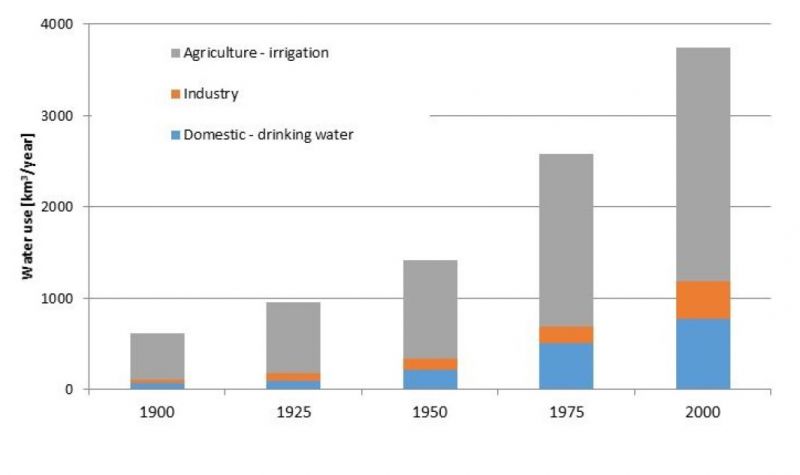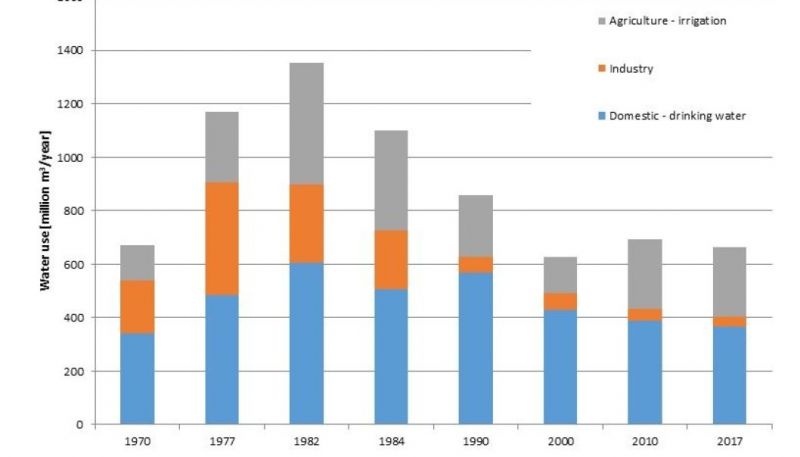Is the world going to run out of water?
Published on by Water Network Research, Official research team of The Water Network in Academic
In many places the answer is yes – if we continue as we have done. The rest of the world could learn a lot from Denmark, one of the few countries to have reduced its water consumption.
Water is a vital resource for our homes, industrial production, food production and ecosystems. But the world’s water consumption is increasing dramatically, and in many places, obtaining enough water is a huge challenge.
The major cities of Cape Town in South Africa and Chenai in India have spoken of ‘day zero’ as the day when, unless it rains beforehand, there will be no more water running out of taps. In many places in the USA, India and China, aquifers will be emptied in the foreseeable future if the current, unsustainable pumping of water continues.
In their most recent annual reports on the largest global risks, the World Economic Forum has consistently listed ‘water crises’ among the most significant threats – well ahead of issues such as terrorist attacks, food safety and financial crises.
What kind of challenges can we expect in the future, and how can we find solutions to the problems concerning water?
Watch out for water stress
A good indication of an area’s water scarcity is the so-called water stress index that indicates the proportion of renewable resources (precipitation minus evaporation) used in society (see figure 1).

Figure 1. The assessment of water stress defined as the ratio of water consumption to the renewable water resources (precipitation minus evaporation). Source: WRI Aqueduct, visited 26.1.2020
In areas with water stress levels of more than 20 percent, special efforts are necessary in order to obtain sufficient water. The closer the water stress level gets to 100 percent, the more expensive it becomes to solve the water insufficiency in a sustainable manner.
The diagram shows that areas with high water stress levels appear in relatively dry areas with large populations, such as the Mediterranean, the Middle East, Central Asia, most of India, northern China, western USA and Mexico.
Water shortages can severely damage economies
Climate change will result in many areas that are currently affected by water stress becoming even drier and therefore more adversely affected, while other (fewer) areas that are dry today will get more precipitation and therefore less water stress.
In the year 2000, approximately 2.4 billion people, or 40 percent of the world’s population, were living in areas with high levels of water stress (more than 40 percent). This number is expected to increase to 4.2 billion (47 percent) in 2050 due to population growth, economic growth and climate change.
The World Bank has estimated that the effects of climate change on water resources in 2050 could result in a decrease in GDP of up to 10-15 percent in certain dry regions in Asia and Africa.
We can no longer waste the world’s water
Water consumption in the world has increased as we have grown in number and economies have grown (see graph 2). As evidenced in the UN’s sustainable development goals, safe water and sanitation (sewage etc.) are essential for public health.
 Graph 2. The development of global water consumption divided by sectors. Source: UNEP
Graph 2. The development of global water consumption divided by sectors. Source: UNEP
Water supply is also a prerequisite for many of industrial products.
Agricultural irrigation, which accounts for the majority of global water consumption, is crucial for us to be able to continue producing sufficient amounts of food.
An increase in water consumption is therefore not a negative indicator of the state of the planet in and of itself. The problem is that we simply do not have infinite amounts of water at our disposal.
Therefore, we must consider water a limited resource that we have to protect, meaning that we cannot continue to allow ourselves to waste it.
Denmark may serve as a role model
The great challenges of the world’s water resources require intelligent water management. And in this respect, Denmark has something to offer.
Denmark is one of the few countries that has been able to reduce its water consumption without harming the country’s welfare in any way. Danish water consumption today is approximately 40 percent lower than it was in 1980 (see graph 3), and it is still decreasing.

Graph 3. The development of water consumption in Denmark. Source: Jørgensen et al. (2015) and GEUS
Denmark managed to reduce the curve through a combination of greatly increased water prices (including green taxes), water saving campaigns, more water efficient technology in households and industry, and a reduction of water loss from the mains supply.
This has been possible because of the political will to introduce unpopular increases in pricing and green taxes.
SOURCE Jens Christian RefsgaardPH.D., DR.SCIENT., PROFESSOR EMERITUS AT GEUS
Taxonomy
- Resource Management
- Water Resources